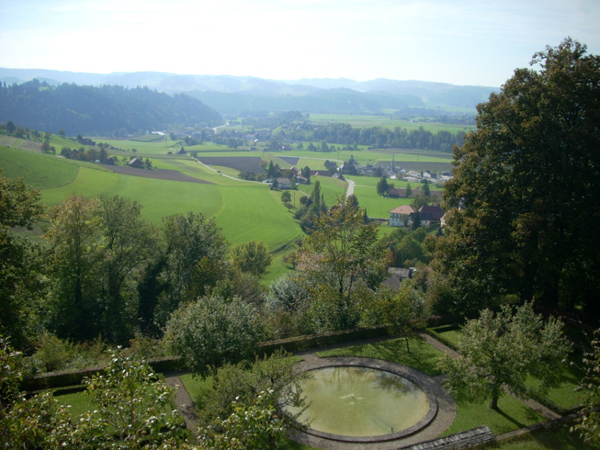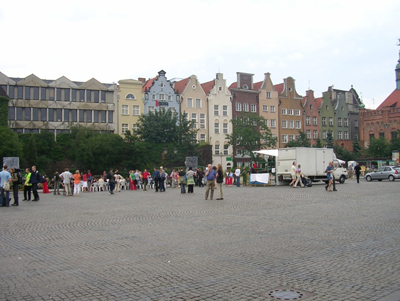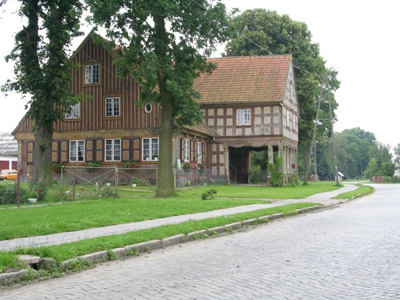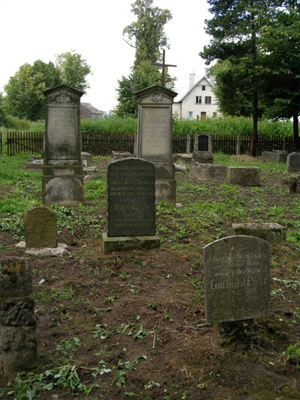
A video of this presentation can be viewed by clicking here and scrolling down.
By the 17th century, Anabaptists were scattering across Europe. Some remained in the Swiss cantons, the Netherlands and the Danzig area. But Anabaptists/Mennonites were immigrating to Alsace, to Prussia, to Polish area, and even to Pennsylvania by the end of the century.
By 1648, Swiss Anabaptists, or Brethren, as they called themselves, were living only in rural areas in the cantons of Zürich and Bern. Severe persecution continued into the 17th century. Some Anabaptists were sent to the sea as galley slaves - and few came back alive. Others were imprisoned or branded on the forehead. Because Anabaptists were married in their own congregations and not by state-church pastors, their marriages were considered invalid and children were prohibited from inheriting from their parents. In some areas, the Swiss Brethren were required to live above certain elevations.
Swiss Brethren began emigrating - to the German Palatinate, to Alsace, to Prussia and to Pennsylvania, beginning in 1683 when the first Mennonites came to Germantown, settling near Quakers. Dutch Mennonites gave significant financial help to Swiss Mennonites immigrating down the Rhine and across the Atlantic to North America. By the end of the 17th century, Mennonites remained only in the canton Bern, concentrated in the Emmental, or Emme valley.
 |
The Treaty of Westphalia in 1648 transferred Alsace from German to French government. Mennonites in Alsace used the Schleitheim Confession of 1527 and later adopted the 1632 Dordrecht Confession, originally written by Flemish Mennonites. As did the Swiss Brethren, Mennonites in Alsace continued to use the Ausbund as their hymnal and German as their primary language. Documents in the Municipal Archives in Strasbourg suggest that rural Mennonites in the area were known for their success in folk medicine.
Jacob Ammann was a minister in the Mennonite congregation in Markirch and was troubled by what he perceived as a lack of church discipline in Swiss and Alsatian congregations. According to the Dordrecht Confession, church members were to practice strict avoidance of those who had been banned. Between 1694 and 1697, the lines became sharply drawn between the Amish, as Ammann's followers were called, and the other Swiss and Alsatian Mennonites.
Earlier Anabaptist congregations in South Germany had been wiped out by persecution, but by the 17th century, the Palatinate was a relatively safe place for Mennonite to live. An edict of toleration issued in 1664 allowed them to worship in homes (not dedicated church buildings) but they were not allowed to baptize. In addition, Mennonites were required to pay an annual tax for the privilege of toleration. Immigrants to this area include Swiss Mennonites, Hutterites from Moravia and Dutch Mennonites, as well as other refugees.
Hutterites had come to Moravia already in the 16th century, and their "Golden Period" lasted from about 1555 to 1595. At their peak, there were about 100 colonies, or Brüderhofe, in Moravia and Slovakia, with 20,000 to 30,000 members. Persecution began in the 1590s and continued through the Turkish war of 1593-1606 and the Thirty Years' War of 1618-1648. By the end of this period, the Hutterite colonies were virtually decimated. In the 18th century, Slovakian Hutterites were forcibly converted to Catholicism. Hutterites in Transylvania were able to emigrate to the Ukraine, from which they later emigrated to North America.
 |
In the Low Countries (now Belgium, the Netherlands and northern Germany), Anabaptism spread through merchants and craftspeople, especially weavers. Western Europe had a long tradition of radical groups practicing cloth-related trades. Emden (now in Germany) was a tolerant city, as was the Schleswig-Holstein area in the north. In Altona, near Hamburg, Mennonites were legally tolerated after 1601 if they paid a special tax.
In Dutch, Mennonites are known as Doopsgezinde, "the baptism-minded." By the 17th century, there were already divisions among them: the Flemish (the strictest), the Frisians and the Waterlanders (who opposed the strict use of the ban). These divisions continued for centuries, although the names no longer had any geographic connection; that is, the Flemish congregations were not necessarily made up of people from Flanders (Belgium).
After Dutch independence from Spain, William of Orange established a policy of toleration of Mennonites. However, they did not have full freedom of worship until the 19th century. Mennonites gained status and wealth and some were active in shipbuilding and the Baltic Sea trade. Hans de Ries, a Dutch Mennonite leader, lamented, "The goods are enriched, but the soul is impoverished. Clothing has become precious, but internal decorations have perished. Love has diminished and quarreling has increased."
Dutch Mennonite couple painted by RembrandtThe first Mennonites immigrated to the Vistula Delta, now northern Poland, beginning in 1526 through the 1530s, mostly from the Netherlands. Menno Simons visited the area in 1549 and Dirk Philips founded the first Mennonite church in the Danzig area, now Gdansk, in 1569. In the 16th and 17th centuries, worship services and church records were in the Dutch language. Mennonites were tolerated in the area, but were often not allowed to have special church buildings. The first such building in the area was in the city of Elbing in 1590.
Mennonites here were not subjected to the death penalty for their religion but there were still many restrictions. In the early years, they could not live within the walls of Danzig or do business there, because of pressure from the guilds, who feared economic competition. Where Mennonites lived under Polish rule, there was protection from the king, who guaranteed their rights to make lace and weave cloth. But sometimes local lords and city councils adopted more stringent and discriminatory policies. Mennonites were often subjected to extra taxes and were sometimes prohibited from shipping goods by canal or river, which was by far the easiest and quickest way to market.
 |
In rural areas, Mennonites generally did not own land, but leased it for 30 to 40 years. They improved canals through the Vistula-Nogat delta, generally kept it from flooding with seawater and built Dutch-style windmills to pump water and grind grain.
 |
 |
Mixed marriages (Mennonites and Lutherans or Catholics) were forbidden but sometimes happened anyway. Mennonites were also forbidden to gain converts from the state churches but that also happened anyway. One way of getting around the law was to have the potential convert take a ship to Amsterdam, be baptized there and come back to Poland/Prussia already a Mennonite.
 |
 |
Since all Mennonites were expelled from this area after World War II and Slavic populations brought in by the Soviets, there are no Mennonite congregations left in this area. Some abandoned church buildings can be found. On the site of the former Heubuden Mennonite Church, a Roman Catholic parish is meeting. A group of German and North American Mennonites has placed a plaque on the building reading, in Polish and German:
We have here no abiding city, but we are looking for that of the future. ... Do not neglect doing good and the care of the congregation! For such sacrifices please God. - Hebrews 13:14, 16We remember with thankfulness our mothers and fathers, who found their last resting place in this land that was our homeland. We greet our sisters and brothers who live and worship here now. Faith in our common Lord, Jesus Christ, leads us to community. God help us never again to forget this.
 |
The Grace Hill Mennonite congregation began in an area along the Vistula River, south of the delta area. This is near the modern city of Chelmno (Kulm). Like Danzig, Chelmno was a member of the Hanseatic mercantile league. In the 17th century, the city was under Polish rule. Mennonites began settling in the Montau-Gruppe-Schönsee area in 1553. Some came from the Danzig environs while others were new immigrants from the Netherlands. Most identified with the Frisian group, but there were some Flemish. The first church building was frame with a thatched roof.
At Schönsee, most Mennonites were farmers. The only crafts allowed were weaving, tailoring and shoemaking for private use only. Mennonites were allowed to fish in the Vistula River. But life was not easy. Local governments imposed heavy taxes on Mennonites. The land was subject to frequent flooding. In times of need, they received financial help from Mennonites in the Netherlands.